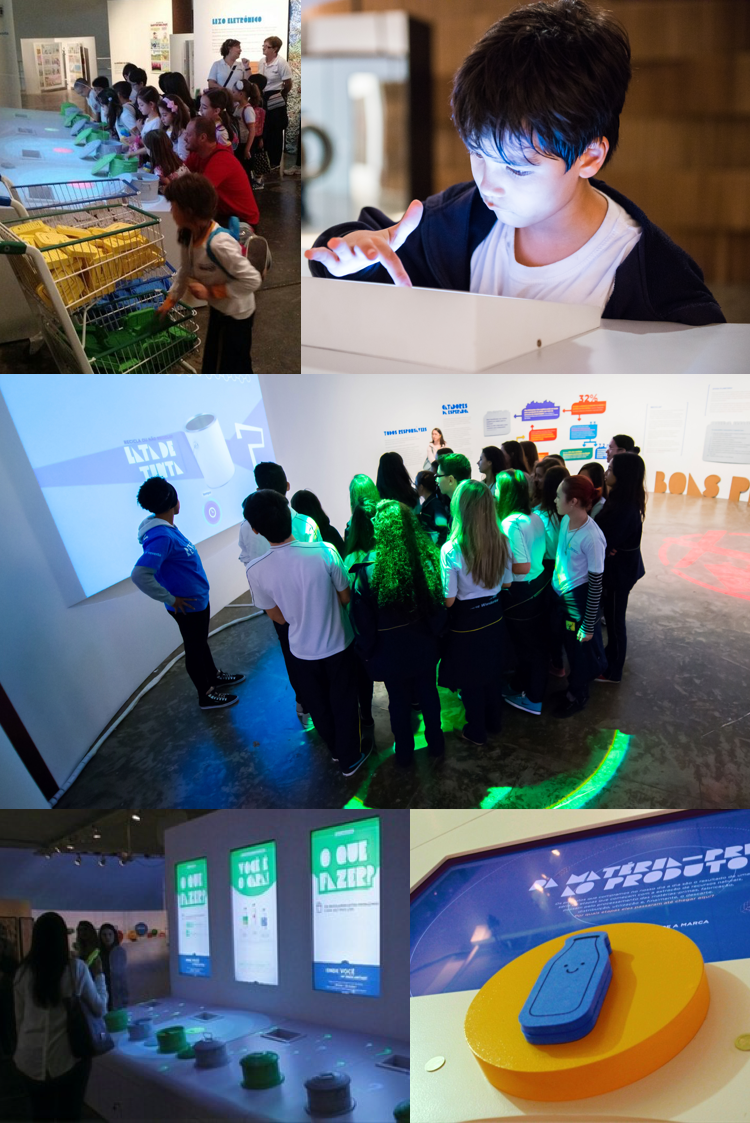
AN INTERACTIVE EXHIBIT ABOUT RECYCLING.
Art and sustainability for everyone.
ABOUT THE PROJECT
The exhibition "Reverta - Art and Sustainability” had as purpose to draw public attention to creative productions that may arise from waste, as a continuation of life for materials after their practical use, re-signifying them.
For that, it has counted on several artists, who explored the theme in Brazil and over the world.
Main roles in this project:
Art Direction - Concept and Product Development - User Experience

Kids and teens were the main target
audience of the exhibition

Kids and teens were the main target audience of the exhibition
For the institutional area of the exhibition, curators had the need to engage kids and teens in this journey, and they did not know how to create a playful and informative environment capable of competing with cell phones and other devices that competed for their attention.
As a way of solving this problem and creating a bond with our audience, we have created a narrative that involved the public from the moment they arrived at the exhibition, by using storytelling combined with technology in four interactive installations.


︎︎︎
The main interaction was made up of furniture inspired by the old pinball machines.
This station contained two wastebaskets - one gray and one green - representing respectively organic and recyclable waste. The aim was to instruct visitors of the exhibition in a playful way about the recycling of materials and their correct way of disposal.
Dozens of mockups were printed in EVA (Ethylene Vinyl Acetate), representing the materials that can be recycled (paper, plastic, aluminum and glass), and could be symbolically discarded in the station's trash cans. These mockups were differentiated through radio frequency identification (RFid). When discarded in the incorrect trash can, the object was thrown high as a sign of rejection, informing the visitor details about that material and its correct way of disposal, and inviting him to try again.

Prototype of electronic and physical mechanisms

Prototype of electronic and physical mechanisms
In the second station, visitors approached the material to be recycled to a sensor, and received more information about its life cycle, from extraction to disposal; in the third station, it was possible to calculate the amount of waste that the visitor produces per year, from trash generated on a daily basis (such as plastic cups, straws, packaging); and, in the fourth and final interactive station, visitors were invited to participate in a collective game where they needed to guess, between two materials, which one was recyclable.


The exhibition was extended due to its success, and 100% of the exhibition’s material was recycled after completion. In total, more than 50,000 people went through the exhibition, which took place between May and July 2015.